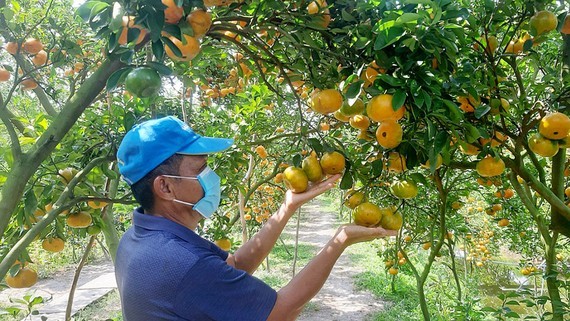 Illustrative photo
Illustrative photo
Vietnam has great potential for producing delicious fruits, so this is an opportunity for Vietnamese fruits and agricultural products to sell to a large market like China.
According to Mr. Tran Thanh Hai, Deputy Director of the Import-Export Department under the Ministry of Industry and Trade, through official export, enterprises of both countries will have a contract and accompanying commercial documents such as invoices, bills of lading, quarantine, certificates of origin (C/O). At the same time, firms in the two countries enjoy transactions of a large volume of goods, high value, payment via bank, delivery through international border gates, and main border gates.
For years, unofficial export has not had a contract with payment in cash, and goods are exchanged and delivered through a secondary border gate, so it is very risky. During the harvest season, traders often bring goods to the border gate and then look for buyers at the Tan Thanh border gate where customs clearance is carried out for about 250-300 vehicles per day.
Agricultural products that have not been licensed for official export to the Chinese market must pass through this border gate. But without a contract, when China blocks to control the epidemic or other reasons, trucks carrying out farm produce will be congested and have to wait for customs clearance for weeks at the border gate. Many trucks even have to return.
Each year, Vietnam sells about 3.3-3.5 million tons of fresh fruit to China. Currently, many other Vietnamese agricultural products that have abundant output have not been officially exported, such as custard apple, pomelo, plum, and pineapple.
According to Mr. Hoang Trung, Director of the Department of Plant Protection under the Ministry of Agriculture and Rural Development, in 2022, the ministry will negotiate to officially export coconuts and pomelos to the US and Vietnamese longan to Japan by September.
However, exporters must ensure quality standards and produce original certificates of agricultural products for official export. Since 2018, China has introduced a requirement for imported agricultural products to have a growing area code and a packing facility number.
From the beginning of 2022, official fruit exports to China must have original certificates granted with a code by the Ministry of Agriculture and Rural Development and approved by the General Administration of Customs of China.
As of March 2022, the country has granted 3,646 codes for growing areas for an area of more than 197,000 hectares in 50 provinces and cities and 1,798 codes for packing facilities for fresh fruit for export. In particular, for the Chinese market alone, codes for nearly 2,000 planting areas have been granted.
However, some exporters have been using wrong codes or borrowing codes of other organizations and individuals for export, leading to warnings from importing countries, greatly affecting the reputation of Vietnamese agricultural products.
In order to achieve the export target of US$55 billion in 2022, in the last six months of the year, responsible agencies have made efforts to expand the market to Japan, Korea, India, the EU and the Middle East; and at the same time these bodies have selected suitable products for export to potential markets such as Russia, ASEAN, and Africa.
























